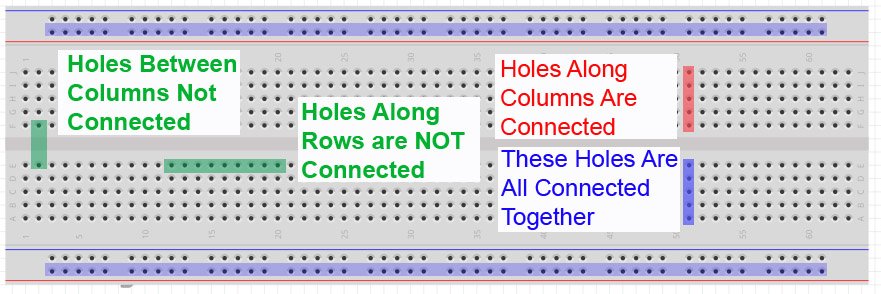Breadboard Connections
There are many manufactures out there making different models. So some breadboards may look different in size, color, or shape. But they do the same job and are exactly alike when it’s coming to circuit prototyping.
Connections:
The upper and below two rows of the breadboard are the power portions, called the power rail. Input power sources are attached to it and then distributed across the board by other external wires.
Further, each power rail is subdivided into two groups. In total there are four power portions you can use to attach four different levels of voltages. Sometimes when you are working with a project, you may need different voltages at a time. This could be a problem, so to solve this issue in breadboard you have four different power portions.
The two rows of power rail are connected short horizontal and are open in vertical to the other adjacent row. Conventionally, the upper row is used for negative potential and the lower row is used for positive potential. It is a convention, you are free to do whatever the way you like it.

Column wise all the dots are short (connected) and row-wise all the dots are open. You can connect a terminal of any device in any dot in any column, this means that now the entire column is the extended version of the terminal, connecting something to this column meaning connection it to the terminal of that particular device.

As you can see at the side of the breadboard, there are labels from A to E and then from F to J. From A to E we count the number of rows is 5, and it is a 5 x 60 matrix. The same goes for the other half i.e. from F to J.
Between the E and F row, there is a big gap, and it is differentiating the upper portion from the lower. Between the E and F, we connect our ICs. Such that if connect the IC in the upper or lower portion we will end in shorting the legs of IC and can damage it permanently.

Why we use it anyway:
To make circuit prototypes
To test our ideas
To compare results with simulation
To quickly fix the issues in the electronics system
To have fun with electronics and make cool projects on it
